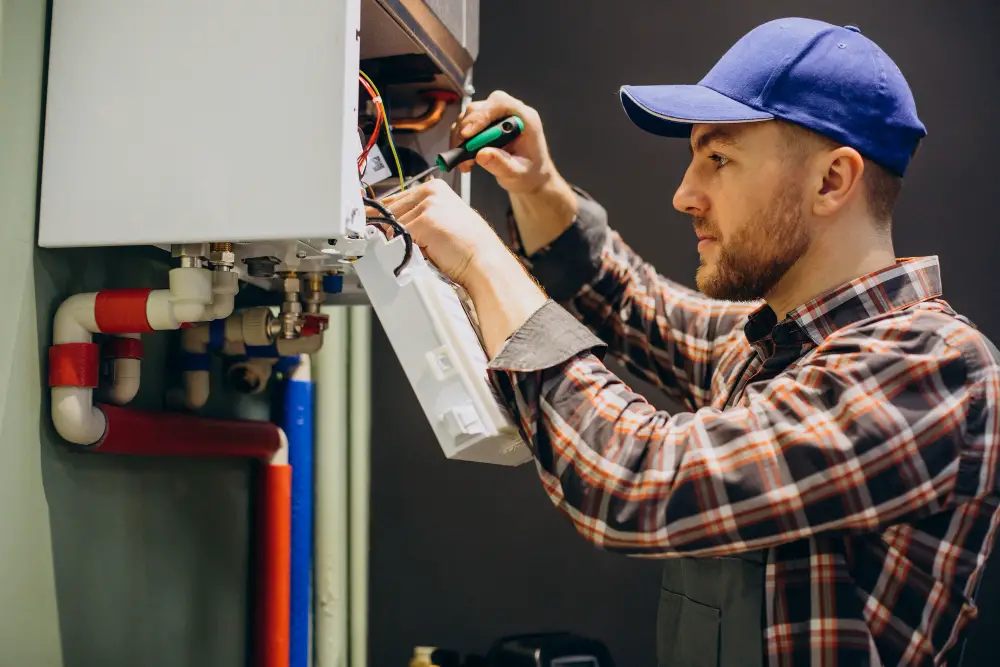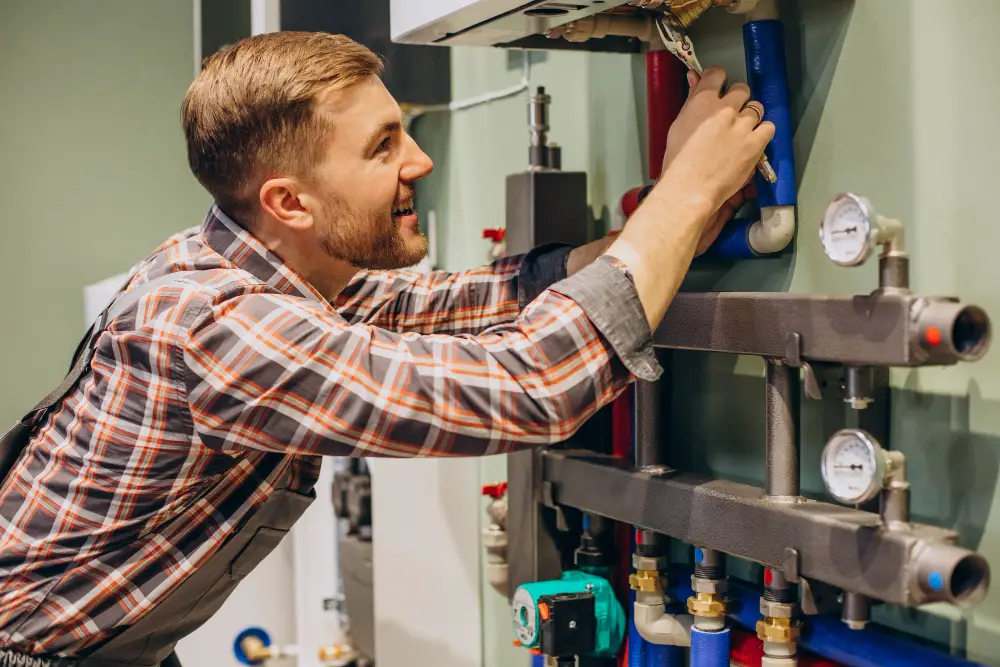As temperatures drop, the last thing anyone wants is for their furnace to encounter problems. Unfortunately, these appliances can be prone to issues over time, and dealing with a malfunctioning furnace can be frustrating and expensive.
However, before you panic and call a professional technician, there are some troubleshooting steps you can take on your own. In this blog post, we’ll discuss some of the most common furnace problems homeowners face and provide tips on troubleshooting them before calling in outside help.
Furnace Not Turning On

If your furnace is not turning on, it’s one of the most immediate and obvious issues you might face. Often, it could be as simple as the thermostat not being set correctly or a circuit breaker being tripped. Ensure the thermostat is set to “heat” and the temperature is higher than the current room temperature.
Check your breaker box to see if the circuit needs to reset if it’s a power issue. However, if these checks don’t solve the problem, you may be dealing with a more complex issue, such as ignition failure or a problem with the motor.
In such cases, the furnace repair service providers in Saint Paul recommend replacing the relevant parts or even the entire furnace. Diagnostic testing can help determine the root cause of the problem.
Unusual Noises Coming from the Furnace
A furnace that is functioning correctly should make minimal noise. It could be a sign of an issue if you hear rattling, banging, or squeaking noises coming from your furnace. Often, this could indicate a loose belt, a faulty motor bearing, or a clogged burner. In some cases, the blower motor may need to be replaced if there is excessive wear and tear.
To troubleshoot, turn off the furnace and check if any parts are loose or damaged. If everything seems fine, try cleaning the burners to remove any debris causing the noise. However, if the problem persists, it’s best to seek professional help to avoid further damage.
Constantly Cycling On and Off

If your furnace seems to be constantly cycling on and off, it’s known as short cycling and is a sign of an underlying issue. This could be caused by a dirty air filter, a malfunctioning thermostat, or even restricted airflow due to blocked vents.
In some cases, this problem can also be caused by an oversized furnace that needs to be sized correctly for your home’s heating needs. If needed, troubleshoot, check, and replace the air filter and ensure all vents are clear of obstructions. If the problem persists, it’s best to seek professional help to diagnose and fix it properly.
Uneven Heating Throughout the Home
If you notice that some rooms in your home are warmer than others, it could be a sign of an issue with your furnace. This could be caused by clogged air filters, blocked vents, or even a faulty blower motor. To troubleshoot, check, and clean the air filters, ensure all vents are open and unobstructed.
If the problem persists, it’s best to seek professional help, as it could be a more complex issue with the furnace itself. A professional technician can thoroughly inspect and recommend the necessary repairs or replacements.
Furnace Blowing Cold Air
If your furnace is blowing cold air, it could be due to various factors, such as a thermostat set to ON instead of AUTO, a dirty air filter, or an issue with the pilot light. Start by checking the thermostat to ensure it’s set to AUTO, which allows the fan to blow only when the furnace is heating the air. The fan blows constantly if it’s set to ON, even when the furnace isn’t heating.
Then, examine the air filter; a dirty filter can restrict airflow and cause the furnace to overheat and shut down. Also, check your furnace’s pilot light to see if it’s out. If none of these steps resolve your issue, it would be advisable to call a professional, as it could be a more severe problem, such as a malfunctioning flame sensor or issues with the furnace’s gas supply.
Increase in Energy Bills
An unexpected rise in your energy bills could indicate an inefficiently functioning furnace. If your system works harder to maintain the desired temperature, it will consume more energy, leading to a spike in your monthly bills. Factors contributing to this could be a dirty air filter, a malfunctioning thermostat, or general wear and tear that reduces the system’s efficiency.
To troubleshoot this issue, start by checking the furnace filter. A clogged filter will restrict airflow, forcing the system to work overtime and consume more energy. Replacing a dirty filter with a new one can improve efficiency and lower energy costs. Similarly, ensure that your thermostat is working correctly.
By understanding common furnace issues and troubleshooting them, you can save time and money by avoiding unnecessary service calls. If you need more clarification or are uncomfortable with troubleshooting steps, it’s best to call a professional.
Schedule regular maintenance checks to keep your furnace in good working condition and ensure a warm and comfortable home during colder months.
Related Stories
- Is It Time to Have Your Furnace Serviced?
- How to Choose a New Furnace
- Reasons Your Roof May Be Leaking and How to Fix Them
- Common Window Problems and How to Fix Them
- Aircon Maintenance Tips You Need to Know Before Summer Hits
Recap
